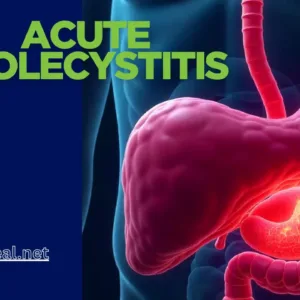Introduction:
Osteoporosis, a condition characterized by weakened bones prone to fractures, disproportionately affects women. As women age, their risk of developing osteoporosis increases, making it crucial to understand the factors contributing to this condition and how to prevent it. In this blog post, we’ll delve into the increased risk of osteoporosis in women and provide actionable prevention strategies.
Why Women Are More At Risk
There are several factors that contribute to the increased risk of osteoporosis in women:
-
Hormonal Changes:
Estrogen plays a vital role in bone health. A decrease in estrogen production, such as during menopause, can accelerate bone loss.
-
Bone Density:
Women naturally have less bone mass than men to begin with.
-
Menstrual Periods:
Women with irregular or absent periods may be at higher risk.
-
Childbirth:
Pregnancy and breastfeeding can also impact bone density.
-
Body Type:
Women with smaller frames or a history of being thin are at greater risk.
Taking Charge of Your Bone Health
The good news is that there are steps you can take to prevent osteoporosis and keep your bones strong throughout your life. Here are some key strategies:
-
Calcium and Vitamin D:
Ensure adequate intake of calcium and vitamin D through diet and supplements if necessary. Calcium is the building block of bone, and vitamin D helps your body absorb calcium.
-
Weight-Bearing Exercise:
Regularly engage in weight-bearing exercises like walking, jogging, dancing, or strength training. These exercises help to stimulate bone growth and maintain bone density.
-
Bone Density screening :
Women over 65 or postmenopausal women with additional risk factors should undergo bone density test (DEXA scan) to assess bone health.
-
Healthy Diet:
Eat a balanced diet rich in fruits, vegetables, and whole grains. These foods provide essential nutrients for bone health.
-
Limit Alcohol and Smoking:
Excessive alcohol consumption and smoking can weaken bones and increase the risk of fractures.
-
Fall Prevention:
Modify home environment to minimize fall hazards, such as installing grab bars, removing loose rugs, and improving lighting.
Use assistive devices like canes or walkers if necessary, especially for those with balance issues.
- Medication when Necessary:
For women at high risk of fractures, healthcare providers may recommend medications such as bisphosphonates or hormone therapy to preserve bone density.
-
Talk to Your Doctor:
Regular checkups with your doctor can help identify any risk factors for osteoporosis and allow for early intervention.
Chart: Osteoporosis Prevention – A Checklist
| Habit | Benefit |
|---|---|
| Eat calcium-rich foods (dairy products, leafy greens) | Provides the building blocks for strong bones. |
| Take a vitamin D supplement (if needed) | Aids calcium absorption. |
| Engage in weight-bearing exercise (30 minutes most days) | Strengthens bones and muscles. |
| Maintain a healthy weight | Reduces stress on bones. |
| Limit alcohol intake | Excessive consumption can weaken bones. |
| Don’t smoke | Smoking can impede bone formation. |
| Schedule regular checkups with your doctor | Monitor bone health and identify any concerns early. |
By incorporating these tips into your lifestyle, you can significantly reduce your risk and keep your bones healthy for years to come. Remember, strong bones are essential for maintaining mobility, independence, and a good quality of life. Take charge of your bone health today!
Conclusion
Osteoporosis itself doesn’t have a definitive conclusion as it’s a chronic condition. However, the consequences of untreated osteoporosis can be serious. It can lead to:
- Fractures: Especially in the hip, spine, and wrist. These fractures can be debilitating and cause significant pain, disability, and loss of independence.
- Increased Mortality: Studies have shown a higher risk of death following hip fractures in individuals with osteoporosis.
The good news is that osteoporosis is largely preventable and manageable. By incorporating the preventive strategies mentioned earlier and following a doctor’s recommendations for treatment, you can significantly reduce the risk of fractures and maintain good bone health.
Frequently Asked Questions (FAQs) ;
It is a bone disease characterized by low bone density and deterioration of bone tissue, leading to an increased risk of fractures, especially in the hip, spine, and wrist.
Women are at higher risk for osteoporosis, especially after menopause due to decreased estrogen levels. Other risk factors include age, family history, low body weight, smoking, excessive alcohol consumption, and certain medical conditions or medications.
Women are more susceptible to osteoporosis due to several factors: Hormonal Changes: Estrogen helps maintain bone density. After menopause, estrogen levels decline, leading to increased bone loss. Smaller Bone Size: Women generally have smaller and thinner bones than men, putting them at a higher baseline risk. Certain Medical Conditions: Conditions like rheumatoid arthritis and anorexia nervosa can increase osteoporosis risk in women.
There are several preventive strategies women can adopt to reduce their risk : Balanced Diet: Consuming foods rich in calcium and vitamin D, such as dairy products, leafy greens, and fortified foods, helps maintain bone health. Regular Exercise: Weight-bearing exercises like walking, jogging, dancing, and resistance training help strengthen bones and improve bone density. Quit Smoking: Smoking increases the risk of osteoporosis, so quitting smoking is crucial for bone health. Limit Alcohol Intake: Excessive alcohol consumption can weaken bones, so women should limit their alcohol intake . Bone Density Testing: Women over 65 or those at high risk should undergo bone density testing (DEXA scan) to assess bone health and take appropriate measures. Medication and Supplements: In some cases, doctors may prescribe medications or supplements to help prevent or manage osteoporosis, especially for women with significant risk factors.
While osteoporosis cannot be completely cured, its progression can be slowed down, and bone health can be improved with appropriate lifestyle changes, medications, and treatments.
Women over 65 and those at increased risk should discuss bone density testing with their healthcare provider. The frequency of screening depends on individual risk factors and medical history, but generally, screening every 1-2 years may be recommended for high-risk individuals. What is osteoporosis?
Who is at risk for osteoporosis?
Why are Women More at Risk?
How can osteoporosis be prevented in women?
Can osteoporosis be reversed or cured?
Are there any early warning signs of osteoporosis?
How often should women get screened for osteoporosis?




